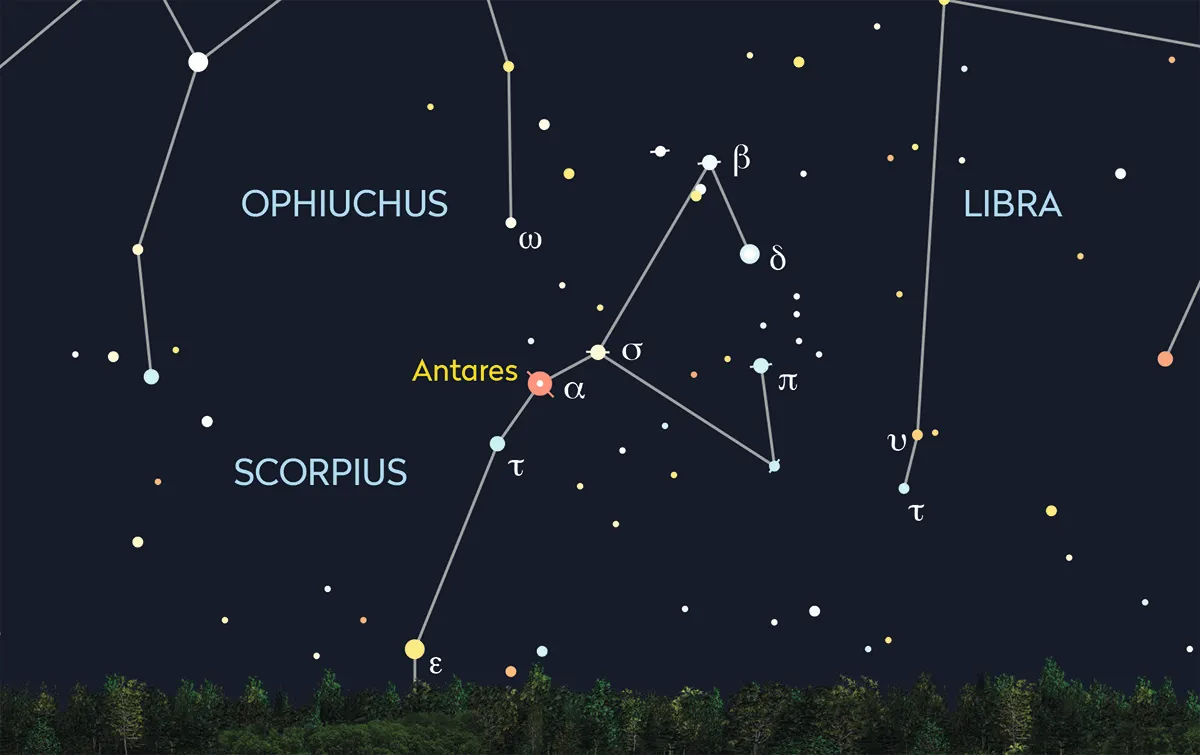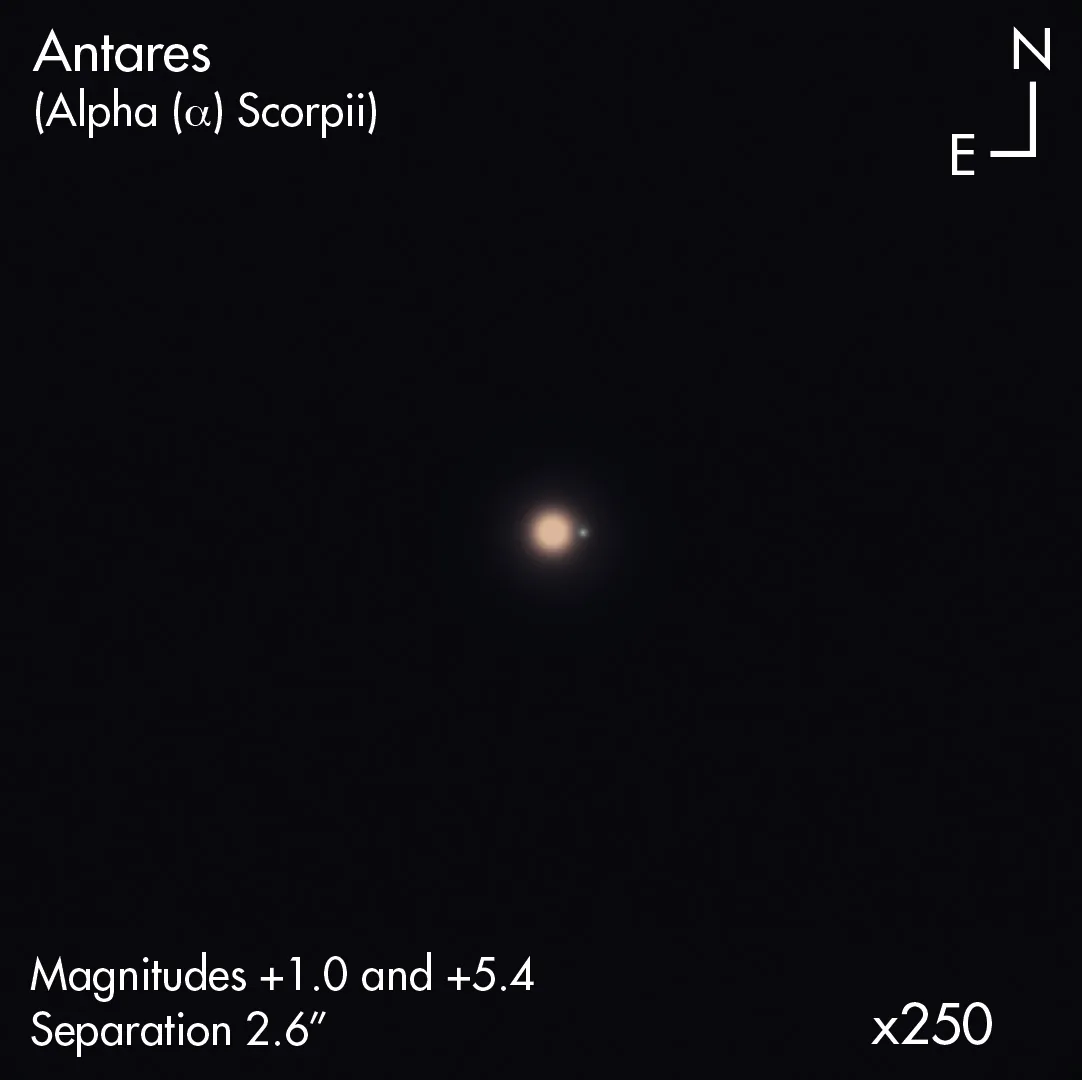Scorpius is one of the best constellations in the night sky, a large and recognisable depiction of the scorpion that mortally wounded Orion, the Hunter.
From the UK, Scorpius is too low to properly appear above our southern horizon in the summer.
We get to see the northern portion, the part that includes the creature’s heart marked by the orange supergiant Antares (Alpha (α) Scorpii).
The 15th brightest star in the night sky, it stands out like a beacon during the darkness-challenged months of June and July, skirting east to west, low above the southern horizon.

Facts about star Antares
Antares has a spectral type M1.5Iab-Ib. ‘M1.5’ indicates where it sits on the temperature scale, Antares measures 3,387˚C, a cool value that gives the star its orange hue.
‘Iab’ is the designation of an intermediate-size luminous supergiant, ‘Ib’ being a less luminous supergiant. Antares is between these designations.
Antares is 550 lightyears away and shines at mag. +1.0, with variability between +0.6 and +1.6. It’s about 76,000 times more luminous than our Sun.
The name Antares comes from the visual appearance of the star. Being relatively bright to the naked eye and having an orange hue, it appears similar to how the planet Mars looks to the naked eye.

The name Antares name means ‘rival to Ares’, Ares being the Greek name for Mars, itself referencing the god of war.
Antares is a binary star, the secondary shining at mag. +5.5 and separated from the primary by 2.6 arcseconds.
While its spectral type of B.25V suggests a blue-white colour, its close proximity to orange Antares creates a colour contrast that causes it to appear blue-green.
For more stars like this, read our guide to observing green stars.
This guide originally appeared in the June 2021 issue of BBC Sky at Night Magazine.
